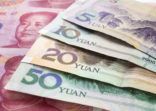Investors across the region rely heavily on cash savings, making it difficult to meet their key financial goals, the firm said.
Across Asia, local-currency cash holdings account for a “disproportionately” large percentage of self-reported assets at about 37%. This rises to about 42% if foreign-currency cash holdings are added.
 Source: Manulife Asset Management
Source: Manulife Asset ManagementThe comparatively smaller weighting to equities and fixed income assets (as seen in the chart above), mean returns are severely diluted by lower-yielding asset classes, cash in particular.
Regional financial goals
Saving for retirement needs was ranked as the leading financial goal on a pan-Asia basis, followed by saving for unexpected expenses and children’s education. Maintaining current lifestyle and saving for purchasing a home were among the other financial goals.
However, Manulife found that the cost of the five leading financial goals increased 6% per annum (4.4% including Japan). At the same time, self-reported investment portfolios delivered average total returns of 2.7% per annum (3.1% including Japan).
“The difference between these two reveals that the average investor across Asia faces a potential investment returns shortfall of 3.3% per annum (1.3% including Japan).”
Singaporean investors, for example, face a potential investment returns shortfall of 3.6% per year, exceeding the Asia (ex-Japan) average potential shortfall of 3.3%.
The average Singaporean holds 33% of their assets in local currency.
“We found that potential local currency returns on self-reported investment portfolios [in Singapore] are the lowest in the region,” said Michael Dommermuth, executive vice president, head of wealth and asset management.
Reallocating a portion of this cash to more efficient assets such as local market equities or fixed income could meaningfully reduce the shortfall.
Shifting 50% of local currency holdings to local equities could cut the potential returns shortfall for Singaporeans to 2.7% from 3.6% per year, the firm said.
















